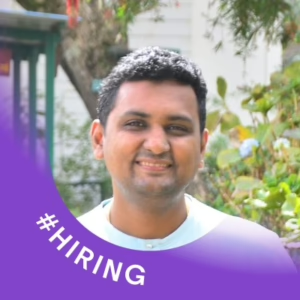By incorporating customer feedback into the product roadmap, you can transform a good SaaS company into a great business. This approach at Peoplesafe has not only been recognized by industry awards but also opened up new markets, improved customer retention, and fueled product-led growth.
Will Solomon, the company’s CTO believes that the customer should be the focus of the tech-dev strategy. “Developing a product strategy based on customer feedback will increase retention so it is important to integrate customer feedback into technology development roadmap.” Building software that is customer-centric can help a business increase customer satisfaction, and reduce churn. It helps launch new modules and monetise them to drive cross-sell and upsell, which differentiates the company from its competitors.”
Peoplesafe, a global software and service provider for at-risk and lone workers, is supported by private equity investors ECI Partners. Peoplesafe’s core protection products offer 24/7 protection 365 days per year to employees in all sectors. This includes high-street retailers, large corporations, and public organizations such as the NHS or councils.
Solomon shares some of his insights on how product evolution is a key driver for business growth.
-
Product development to meet customer needs
Understanding and addressing customer needs through technology is key to the success of any product strategy. Customer surveys can be a great way to get direct feedback from customers on new features. This feedback will help you iterate your product based on the feedback.
Solomon says, “By listening carefully to our customers, we have been able understand which features are the most valuable. This not only allows us to better serve our customers, but also reduces the battery usage of our app. Our clients’ employees asked frequently if they could also use Peoplesafe’s personal protection app on their commute, rather than only at work. Several clients conducted surveys to get direct feedback from their employees about the new features of the app. The surveys confirmed that incidents on the way to and from work were a concern. Travelsafe was designed to alert commuters if their journey did not go according to plan.
-
Targeting new vertical sectors
When identifying new markets, it is important to identify those that have specific needs which are not being met. Naz Dossa is the CEO of Peoplesafe and cites forestry as an example. “This is a field where workers face a number of challenges, including losing signal, which makes it difficult to call for help in an emergency. Roamsafe, a feature of Peoplesafe that uses a second SIM card on the phone to connect our app to any mobile network available, was developed in response to this. This increases the land coverage from 83% to 94% and ensures that you can raise an alert when it is most needed. This is important for workers who work in remote areas, and it allows Peoplesafe to operate within certain vertical sectors.”
-
Prioritising your roadmap
Solomon says that overcomplicating a roadmap is a common mistake. Peoplesafe’s six-weekly review board scores new ideas based on their value, effort, and alignment with the strategy. This helps avoid feature complexity, and ensures clarity for both engineers and customers. Solomon says, “It is definitely a decision based on effort and value.” All feedback and suggestions are presented to the product team where they are evaluated for market potential, feasibility and prioritised based on business goals and strategy.
-
Successfully Testing the Market
Does your solution meet the needs of the customers you’re trying to satisfy? The first two steps to a successful delivery are product strategy and development. It is crucial to test beta versions to ensure they work as intended before releasing them to the market.
Solomon explains how it works at Peoplesafe. “Because our app is modular, we can enable a certain feature as a test first for a company, usually for a small subset of its workforce. We can review employee behaviour and usage to determine if the app is really a solution before it’s sold more widely.
-
Benefits to Customers
To encourage adoption of new products, it is important to communicate their benefits clearly. This can be done through webinars, information about the product, and marketing campaigns that promote the use of the new features. Peoplesafe’s customer success team hosts weekly webinars that highlight the benefits of using their product.
Modules can be packaged in a way that makes sense. For example, if customers purchase the Travelsafe product of a company, it is only logical that they would also want to add vehicle crash detection. Bundles enable a business to tailor a solution for specific end users. Solomon continues: “An example that stands out is New Look. They had already implemented personal safety technology, which activated audio recording devices to capture incidents. Peoplesafe’s Alarm Receiving Centre listened in and escalated to 999 when needed. They received feedback that their employees were threatened as they left their stores or on their way home. So they now offer Travelsafe to all their staff in order to give them that extra reassurance.
-
New product features that can help renewing customers
New product features can be used to target new markets or users, but they can also change the renewal process. A renewal conversation without additional features can only be functional or focused on price. You can either demonstrate improved value at the same price, or upsell the additional features the customer will find useful. Solomon says: “We analyze the data to determine if customers are not using new features we think are relevant to them. We can then provide early intervention, such as training for adoption to ensure customers get value before the renewal conversation.
-
AI in product development
AI can be incorporated into product development. For example, Peoplesafe uses it to summarize its detailed alarm reports of users into a single paragraph. This saves customers’ time when analyzing incident reports and assessing the risks within their employee base. Solomon says: “We hold all our data internally because we have sensitive data. All AI projects begin and end with privacy.” This data can provide valuable insights, such as the locations of high accident or falls, in order to better understand customers.
Solomon summarizes: “Our roadmap of products is meeting two growth objectives for Peoplesafe. We’re able differentiate ourselves from competitors and generate more revenue. People are now getting multiple services, which leads to a longer-lasting relationship. Second, we can reach new markets, both by addressing new verticals and also by extending our existing customer base.
Product evolution drives growth and value for businesses.
The original version of this article, Customer-led innovation drives SaaS growth: Lessons from Peoplesafe, appeared first on Human Resources News.


